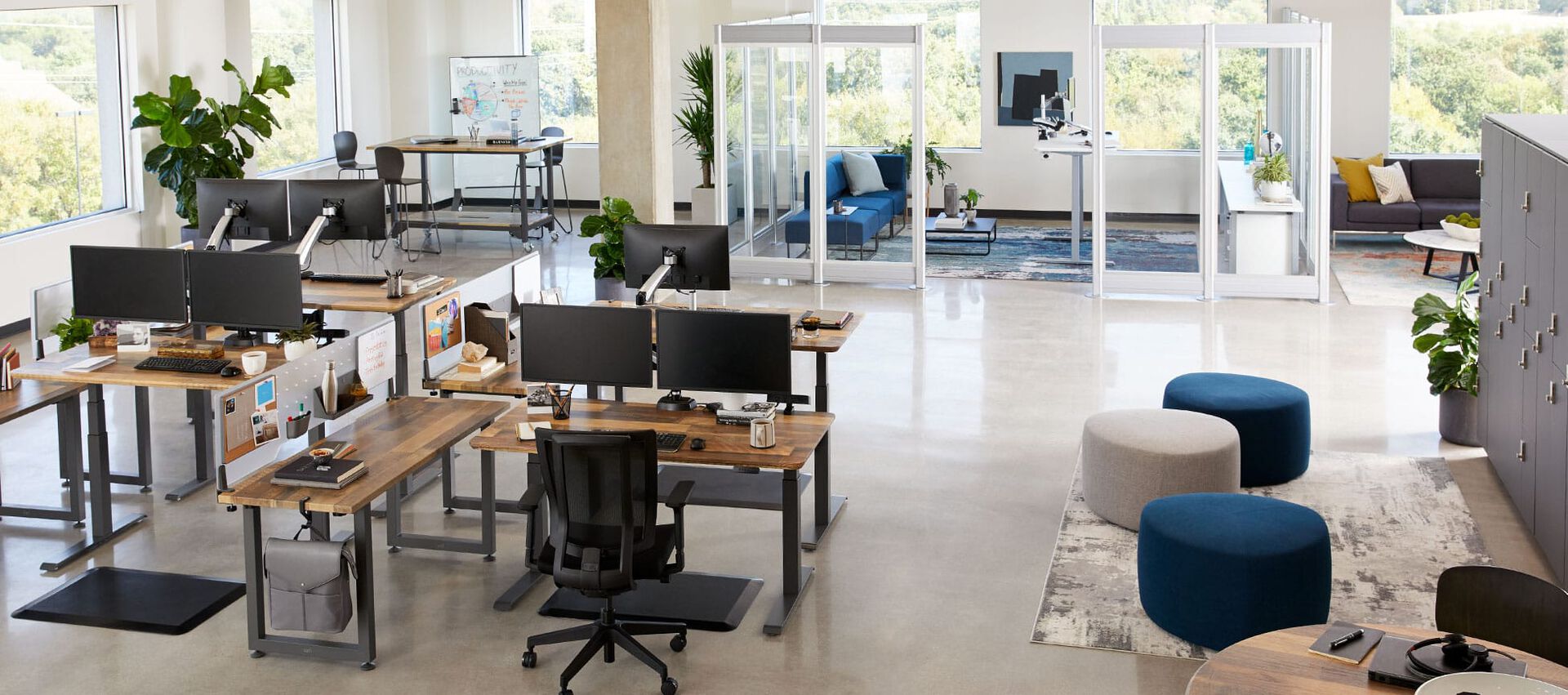THE THIRD PILLAR OF AN ACTIVE WORKSPACE™: SIMPLICITY
ACTIVE OFFICE, FACILITY MANAGER, HOW TO 10 Minutes Reading
Sometimes, the simplest things are the most profound, and for an office, that mantra proves no different.
Simplicity is at the heart of the Active Workspace™. After all, the more complicated and cluttered you make an office, the more you prevent your employees from focusing on what matters most: their well-being and their productivity. In fact, one of the biggest deterrents to effective and efficient work is employees not being able to find what they need to complete a task when they need it.
Clutter is a problem that affects all businesses — from an unnecessary amount of tools like multiple printers to workstations that are bulky and obstructive. But for small- to mid-sized businesses that often have employees playing multiple roles, any amount of lost time or lost resources resulting from an overcomplicated office design is a blow to both your bottom line and employee morale.
When implementing an Active Workspace, then, approach it with a “simple is practical” mindset. Unlike rigid workspaces that are segmented and static, an Active Workspace focuses on simplicity to offer employees a convenient and dynamic space that is designed to meet their multidimensional needs without becoming a burden.
Achieving a Simpler Workspace
With so many benefits to an easy-to-change workspace that enables and encourages people to move around during the workday, why don’t more companies take the plunge? The first issue usually comes back to worries about the “peanut gallery” — those select few people in an organization who drive an inordinate amount of effect on the decisions being made due to their vocality and, more often than not, pessimism.
Certainly, it's tough to amass a team where everyone embraces change. But it's also not necessary. With regard to simplicity in the Active Workspace, the more an office caters to its employees by offering them a space that is both malleable and streamlined, the more that change can be dictated on their terms.
Moreover, many organizations conflate simplicity with an open floor plan, buying into “the lie of the open office” that argues more unstructured space automatically translates to less clutter and fewer obstacles. But when Apple reopened its campus with an open floor plan, for example, one group walked out and demanded space in another building. Such a design negated a lot of flexibility, reduced simplicity, and virtually eliminated privacy.
The reality is that for an Active Workspace to be simple, it must balance the needs of the organization with the needs of its employees, not merely opting for less in the hope that it will render more. Here are three ways to foster simplicity in the Active Workspace:
1. Make a move to simplicity slowly. You don't need deep pockets to make changes to your office. Instead, be thoughtful and deliberate in your decisions, achieving simplicity one step at a time. For instance, you can consider buying a specific number of sit-stand workstations that can be integrated immediately with your employees' current desks. From there, you can evaluate how such additions have or haven't streamlined operations and then move on to more substantive changes, such as removing fixed walls and replacing them with simple and versatile structures. Such a process helps your employees maximize their productivity without disrupting morale, especially for those workers prone to valuing the status quo.
2. Choose a design that’s simple but multifaceted. Once you begin to consider a more comprehensive office overhaul, map out the tasks and roles your employees perform. What types of spaces do their duties demand? What types of spaces could you add to enhance their productivity? Chances are strong that you’ll discover numerous areas that will benefit your workers, such as huddle rooms, meeting rooms, a café, and private offices. Add those spaces to your architectural schematics. That way, workers can feel empowered to work where they want with the resources they want while reducing anxiety and wasted time.
3. Embrace changes that go beyond design. While the Active Workspace foregrounds functional and enhancing designs, such as dynamic furnishings and improvements that foster movement, it shouldn't relegate itself only to these changes. For instance, some simple steps you can take to boost employee productivity and morale is stimulating your people's senses by adding low-level music or scent machines that create a pleasant working environment. With each change you make, though, make sure you test it before settling on it. Did one type of music or scent increase or decrease productivity? Has turnover increased or decreased? Are new hires jumping into the culture faster? In this way, you can evaluate which design choices make the biggest impact to help you plan future ones.
Sometimes, our approach to problem-solving defaults to addition, getting us caught in the whirlpool of complexity and clutter. But simplicity is the Active Workspace's best friend.
Tune in soon for our deep dive into the last pillar of the Active Workspace: a collaborative and balanced culture.
